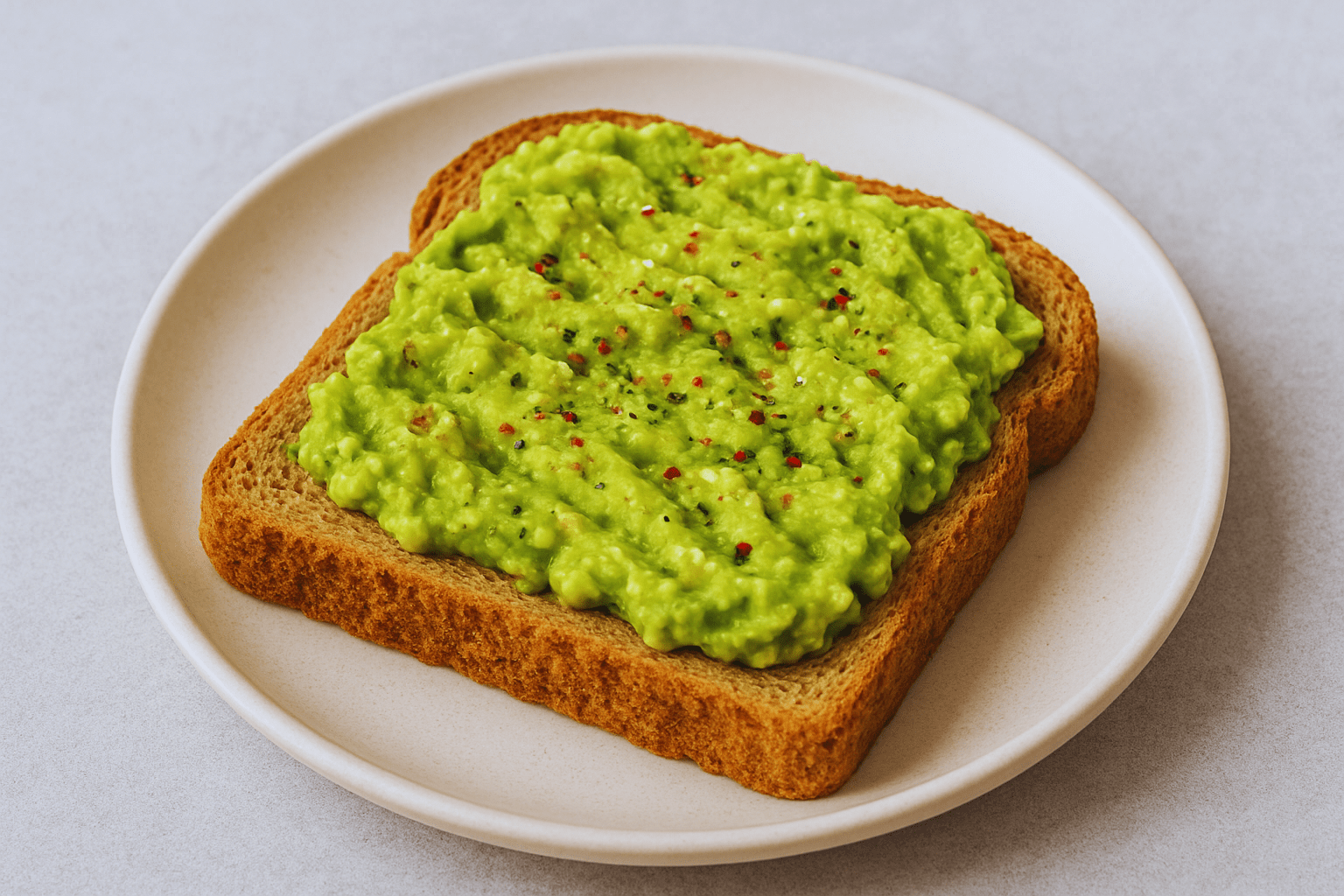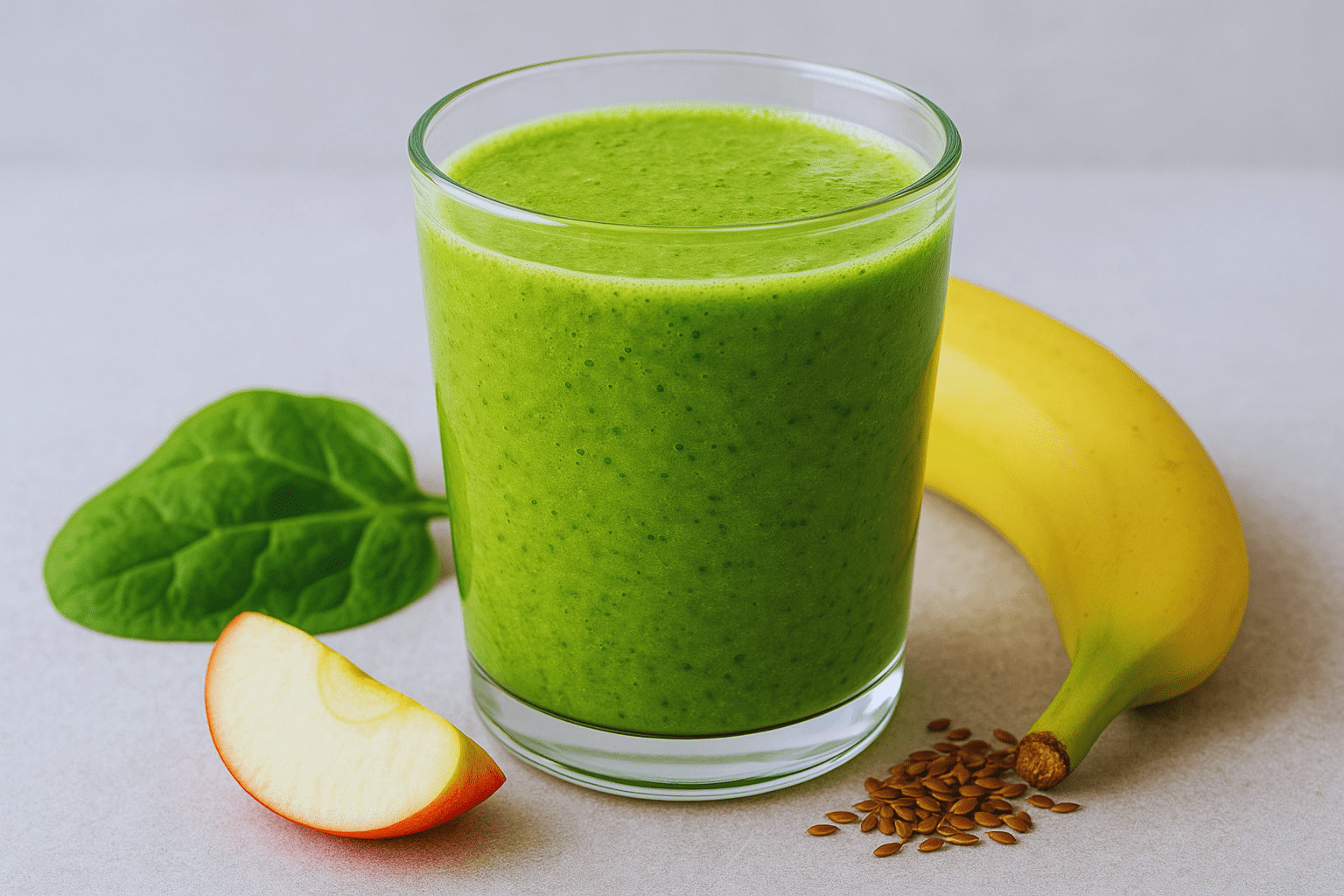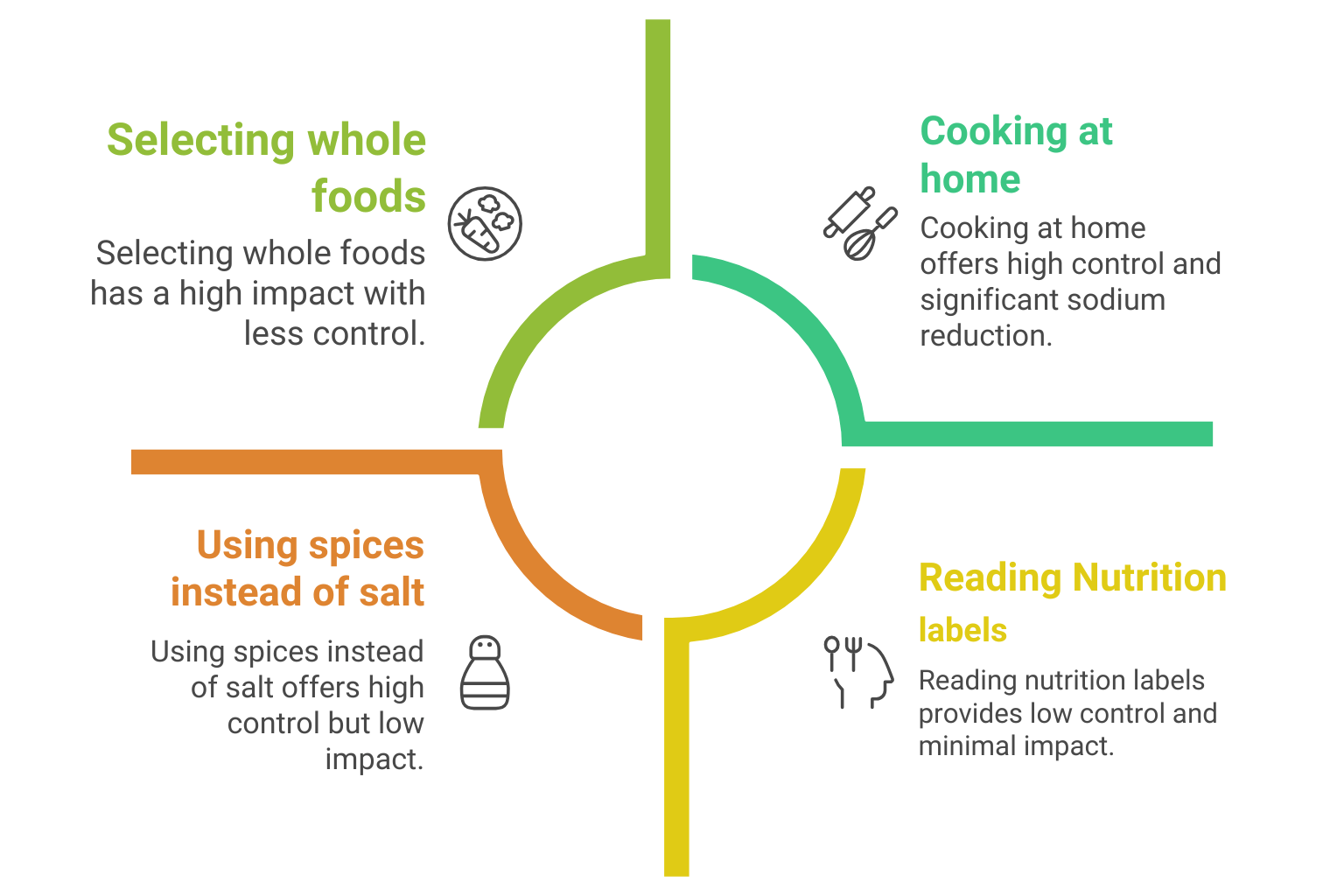Top 5 Doctor-Approved Low Sodium Breakfast Options
Healthy breakfasts do not need to be loaded with salt to make them taste great or keep your stomach full. To maintain your heart, control hypertension, or lead a healthier lifestyle, beginning the morning with a low-sodium breakfast is among the most beneficial alternatives. Dietitians and doctors worldwide frequently stress the necessity of reducing sodium levels in our diets, particularly at the start of the morning. Why? Because breakfast sets the tone for the remainder of the day.
If you eat large, salty meals in the early morning, the total amount of sodium consumed for the entire day will exceed the recommended limit. We will discuss what a low-sodium breakfast is, why doctors advise cutting down on salt, and the five top healthy low-sodium breakfast options you can try at home, without sacrificing taste or nutritional value.
What Is a Low-Sodium Breakfast?
A low-sodium breakfast is a breakfast with the least salt. According to the American Heart Association, the average person should consume at least 1,500 milligrams of sodium daily, but many people consume more than 3400 mg daily. A low-sodium breakfast can limit your intake before lunch, which makes it easier to remain within the healthy range. Foods like processed meats and cheese, canned items, and packaged cereals typically contain lots of sodium, even if they do not taste salty.
A low-sodium breakfast is based on fresh and whole foods such as vegetables, fruits, eggs, oatmeal, and nuts that are not salted. It is a good alternative to salty condiments, boxed mixes, and frozen breakfasts. When you begin your day with a low-sodium diet, your body has a greater chance of maintaining steady blood pressure and keeping your kidneys and heart in good health all day long.
If you want even more fast meal ideas, check out our companion post, Quick, Easy, and Simple Breakfast Ideas. That article emphasizes speed and variety for rushed mornings, while this piece focuses specifically on doctor-approved, low-sodium choices (why sodium matters, exact sodium estimates, and heart-healthy tips). If you want quick recipes plus on-the-go options, read the complete article by clicking the link in this paragraph.
Why Doctors Recommend Reducing Sodium
Doctors from all over the world think that excessive sodium is harmful to your health. It plays a vital role in the balance of fluids in your body. However, when there is too much, your body will hold on to water, which could increase blood pressure. High blood pressure, also known as hypertension, may cause heart attacks and damage to the kidneys. As per the Centers for Disease Control and Prevention (CDC), more than 50% of the people living within the United States have high blood pressure, and too high levels of sodium are among the most common reasons.
Doctors frequently advise their patients to change to a diet low in sodium, especially if they have heart problems or are at risk of developing them. Breakfast is an ideal time to start a change because it is often the first meal people consume at home, and it can be made using lower-sodium foods. In addition, breakfast foods such as sausage, bacon, and cheese-rich meals are laden with salt, so switching the salt out makes a significant impact.
Low Sodium Breakfast Ideas Approved by Doctors
1. Oatmeal With Fresh Berries, as well as Chia seeds
Oatmeal is among the most nutritious breakfasts, and dietitians and doctors recommend it. It is naturally low in sodium and is high in fiber, helping lower cholesterol levels and improving the health of your heart. Make rolled oatmeal with almonds or water and unsweetened milk, and serve it with fresh berries like blueberries, strawberries, or raspberries. You will get an indulgence that is sweet and delicious and does not require additional salt. Chia seeds provide a boost with omega-3 fatty acids, which are known to support brain and heart health.
Doctor. Janet Brill, a cardiovascular nutritionist and the author of "Blood Pressure Down," frequently recommends oatmeal to patients as it can help maintain good blood pressure levels and keep you fuller for longer. Oatmeal is a breakfast that typically has just 10 mg of sodium, making it a good option for those watching their sodium intake. If you want to add a bit of flavor, consider adding cinnamon or vanilla instead of sugar or salt.
2. Greek yogurt with Unsalted Nuts and Banana
A doctor approves plain, low-fat Greek yogurt as a good low-sodium breakfast option. Although some yogurts with flavors are high in sodium and sugar, plain Greek yogurt is simple. It is loaded with protein, aiding muscle repair and energy levels, and promotes good digestion through probiotics. A slice of banana can give the natural sweetness and potassium, which is a nutrient that aids in balancing sodium levels within the body. Almonds or walnuts without salt are packed with crunch and healthy fats and fiber, without adding to the sodium level.
According to the Harvard T.H. Chan School of Public Health, high-potassium foods, rich in potassium like yogurt and bananas, can lessen the effects of sodium and help lower blood pressure. Based on the yogurt brand, breakfasts typically contain under 100 mg of sodium. They are suggested by numerous heart specialists like Dr. Joel Kahn, a cardiologist known for his healthy, plant-based diets. It is delicious, creamy, and simple to make on a busy day.
3. A Veggie Scramble that is Salt-Free
Eggs are a popular breakfast item and, if made with care, are a good addition to a diet that is low in sodium. Instead of making scrambled eggs with bacon or cheese, make vegetable scrambles using fresh vegetables such as tomatoes, spinach, onions, and bell peppers. Include herbs such as oregano, basil, and garlic powder (with no salt added) to give the dish a burst of flavor.
Eggs are naturally packed with 70 milligrams of sodium per egg; however, this is considered to be low in comparison to other processed breakfast foods. When cooked with fresh vegetables, herbs, and spices, they can be an energizing, protein-rich, and balanced meal that supports brain and heart health. For step-by-step instructions and five tasty variations, see our Veggie Omelette Recipes guide.
Dr. Michael Greger, author of "How Not to Die," frequently emphasizes the importance of eating plant-based, whole-food dishes, particularly those with low sodium content and rich in antioxidants. A vegetable scramble made without salt, but using fresh olive oil and herbs, is a perfect example of this idea. It is delicious, vibrant, and packed with pure goodness, without salt.
4. Avocado Toast on Low Sodium Bread
Avocado toast is now an extremely loved breakfast all over the world. It is easy to make, low in sodium, and approved by a doctor. It is essential to use low-sodium or salt-free whole-grain bread, which can be found in the majority of supermarkets. Avocados are naturally high in healthy fats, fiber, and potassium, which makes them a great food for your heart. Cutting half of an avocado in half and spreading it over toasted bread provides a rich and delicious base.
You can add crushed lemon juice, red pepper, or black pepper without using a salt shaker to enhance the flavor. Dr. Dariush Mozaffarian, a cardiologist and professor at Tufts University, has spoken about the advantages of healthy fats, such as those in avocados, particularly when combined with whole grains. The typical breakfast meal is less than 200 milligrams of sodium if you select the appropriate bread, and is full enough to keep you whole all morning. It is a stylish, fashionable, and heart-healthy breakfast choice that tastes as delicious as it appears.
5. Smoothie made with Spinach, Apple, and unsweetened Almond Milk
Smoothies are a refreshing and convenient way to get nutrients into one glass, without adding sodium. A great low-sodium drink could include a handful of spinach, a slice of apple, a quarter of a banana, and a cup of almond milk that has not been sweetened. Including one tablespoon of flaxseeds or chia seeds to add fibre and healthy fats is possible. Spinach and iron are good sources of Vitamin C, and apples are rich in antioxidants and natural sweetness. Unsweetened almond milk has nearly zero sodium and contributes to a smooth and creamy texture.
It is an excellent choice for blending. Mark Hyman, a doctor and expert in functional medicine, often speaks on the necessity of cutting down on the use of processed foods and instead focusing on natural, whole foods. This smoothie perfectly aligns with that concept, providing a hydrating, low-sodium food that is high in vitamins and devoid of added salt. It is ideal for people who want a light but energy-boosting breakfast. It can be prepared in less than five minutes and requires little cleaning.
Quick Comparison of Low Sodium Breakfasts
To help you choose the right meal for your morning, we have created a simple table that highlights the top 5 doctor-approved low-sodium breakfast options. The table includes the key ingredients, sodium levels, health benefits, and expert notes, so you can quickly compare and pick the meal that best fits your lifestyle.
| Breakfast Option | Key Ingredients | Approx. Sodium | Health Benefits | Doctor Notes |
| Oatmeal with Fresh Berries & Chia Seeds | Rolled oats, berries, chia seeds, almond milk/water | ~10 mg | High fiber, lowers cholesterol, supports heart health | Dr. Janet Brill recommends for blood pressure control |
| Greek Yogurt with Unsalted Nuts & Banana | Plain Greek yogurt, banana, almonds/walnuts | <100 mg | Protein-rich, probiotics for digestion, high in potassium | Harvard Health notes potassium balances sodium effects |
| Veggie Scramble (Salt-Free) | Eggs, spinach, tomato, onions, herbs (no salt) | ~70 mg (per egg) | Protein, antioxidants, heart-healthy | Dr. Michael Greger promotes whole plant-based meals |
| Avocado Toast on Low Sodium Bread | Low-sodium whole grain bread, avocado, lemon juice | <200 mg (depends on bread) | Healthy fats, potassium, fiber, filling breakfast | Dr. Dariush Mozaffarian highlights avocado benefits |
| Smoothie with Spinach, Apple & Almond Milk | Spinach, apple, banana, unsweetened almond milk | ~0–20 mg | Hydrating, rich in vitamins, antioxidant boost | Dr. Mark Hyman suggests whole, natural foods |
Tips to Keep Your Breakfast Low in Sodium
Some simple practices can make a huge difference for a healthy, low-sodium diet. Always be sure to read the nutrition labels thoroughly. Many packaged foods, including those labeled "healthy" or "natural," are often filled with hidden sodium. Selecting whole foods, such as fresh vegetables, fruits, oatmeal, eggs, and oats, can reduce sodium levels. Whether cooking at home or enjoying a light meal at a Breakfast Cafe, being mindful of ingredients is key to staying within safe sodium limits. If you cook, consider using spices, herbs, and citrus juice or vinegar instead of salt to enhance flavor.
These choices can improve the taste much better than salt in certain instances. Using salt-free canned tomatoes, beans, or sauces is another simple option to reduce sodium. As per the Mayo Clinic, even minor modifications like switching to salted butter or making plain yogurt in place of flavored ones will help reduce the amount of sodium you consume without drastically altering the taste of your food. Cooking at home can give you greater control, plus the more time you do it, the easier it gets to identify and stay clear of sodium traps.
Conclusion
Making sure you are eating a low-sodium diet that your doctor approves of is one of the best and simplest ways to care for your health, specifically your blood pressure and heart. Whether you are eating an oatmeal bowl, a healthy smoothie, or a vegetable-rich egg scramble, these meals provide real nutritional value without the dangers associated with excessive salt.
With just a few ingredients and a bit of planning, it is possible to create breakfasts packed with flavour and low in sodium. Nutritionists, doctors, and health groups worldwide believe that making these tiny changes can significantly improve your health. Healthily begin your day by using one of these suggestions, and remember that your body will appreciate it. For more healthy recipes and suggestions to fit your lifestyle, take a look at the other wellness ideas on the Pineapple Sol Blog Page.







